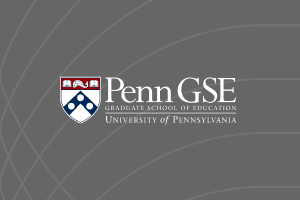Showing 345 Results. In the Media
-

Tyler Thigpen says that most K12 schools in America are currently designed in a way that makes students more dependent, reliant on external guidance, and overall poorer critical thinkers. He argues that a system which gives the child's goals, aspirations, and autonomy the highest importance is the fix.
-

Peter Eckel notes the exceptional nature of governance problems at North Idaho College, stressing that institutions cannot endure under poor governance. He highlights the pivotal role of board-president relations, which were notably strained at the college, impacting its operational effectiveness and accreditation status.
-

Robert Zemsky spearheaded a national initiative to pilot three-year bachelor’s degrees with fewer than 120 credits, aiming to reduce college costs and accelerate workforce entry. The initiative has influenced about 20 schools to consider adopting more accessible and efficient higher education models.
-

Richard Ingersoll identifies a critical issue in education: the mismatch between the growing number of STEM classes and the declining preparation of teachers for these subjects. He notes the shift towards less experienced teachers, contributing to a "revolving door" phenomenon in schools, which impacts teacher retention and student learning.
-

Laura Perna suggests that while community college is often promoted as an affordable educational route, it's not a universal solution due to limitations like accessibility and credit transfer issues, and emphasizes the need for a reevaluation of who bears the costs of higher education, advocating for a role for state and federal governments in making it more accessible and affordable.
-

Karen Weaver emphasizes that it is a standard practice for universities to provide financial assistance to their athletic departments, often in the form of low-interest loans. She recognizes the specific financial challenges and considerations Stanford University faces in its transition to the Atlantic Coast Conference, highlighting that such support represents a strategic and calculated decision by the university.
-

Karen Weaver acknowledges the complexity and emotional impact of cutting sports programs at universities like the University of Arizona, noting it's a difficult decision that affects loyal alumni and student-athletes, and is driven by financial challenges and varying media-rights revenues in collegiate sports.
-

According to Laura Perna, Black and Hispanic faculty are underrepresented at Maryland's largest public universities, reflecting a widespread issue in academia, with barriers to diversification including unrecognized "invisible labor," narrow definitions of merit, and bias in promotion and tenure processes, impacting faculty diversity and student-faculty ratios.
-

Peter Eckel explores the evolution of governance choices in post-Soviet universities. He discusses four distinct governance models that have emerged across the region, emphasizing the need for flexible and context-specific governance structures to meet the diverse needs of higher education institutions in these countries.